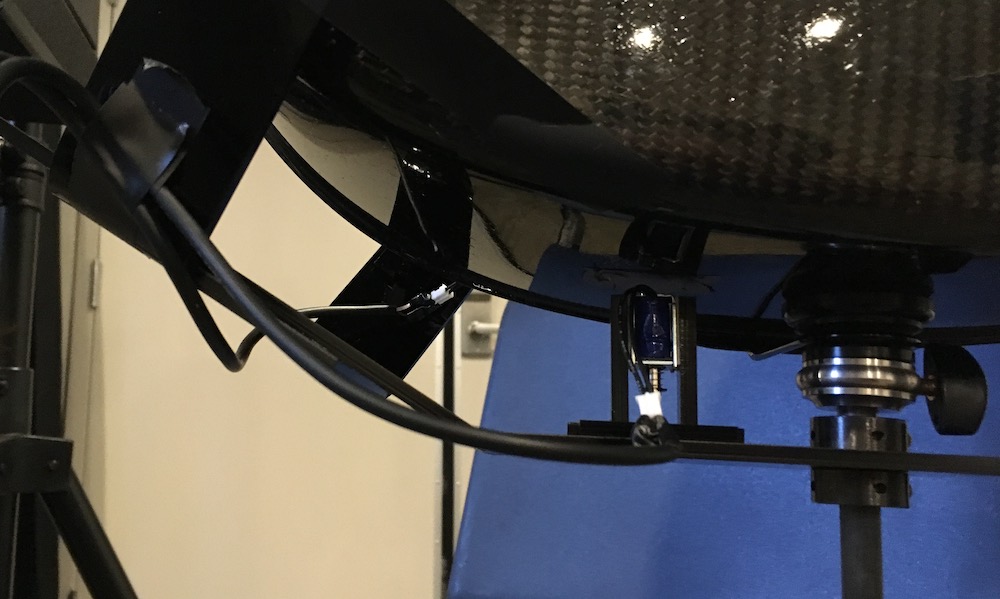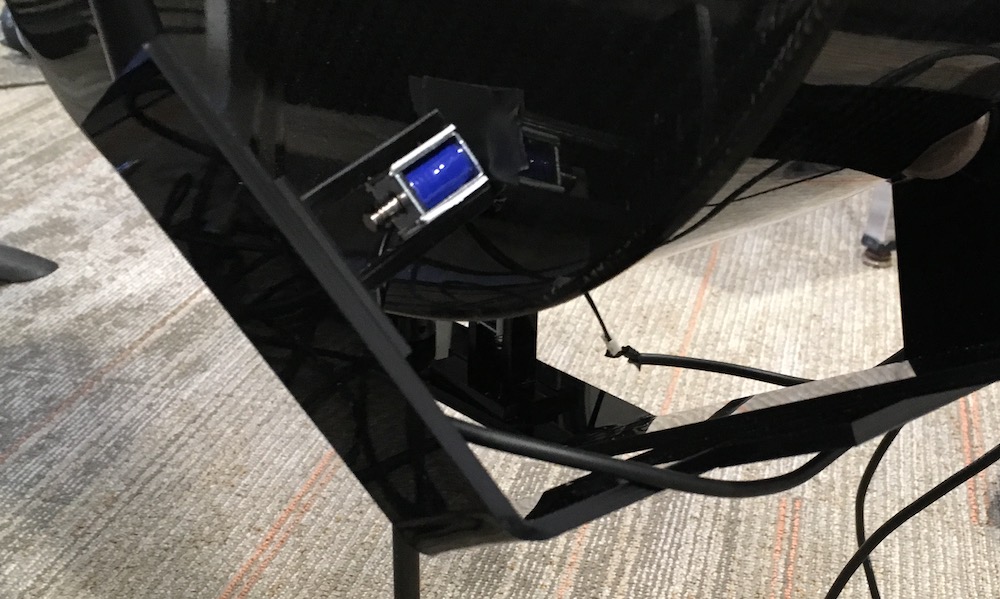Field/harbour/thaw is a piece for cello and spatial sound processing co-developed with cellist Norm Adams during a residency at Ross Creek Centre for the Arts, Nova Scotia in 2018. Working outwards from feedback created from the resonance of the body of the cello interacting with the acoustics of the performance space, it layers slow-moving instrumental material with processed field recordings made around the Ross Creek area, moving from an ‘inner’ to an ‘outer’ sense of place. The field recordings reflect the coastal sound world and the quiet expanses of Eastern Canada. Toward the end of the piece, the cello is abandoned to the sound of the dawn thaw in early spring – the crows and the sound of dripping meltwater become matched by the ticking of a robotic extension to the body of the instrument. The piece is performed in ambisonic surround sound. The mix presented here is binaural, so listen over headphones to achieve the full spatial effect.
The piece grew collaboratively, through a social process of co-creation, working to find common ground, drilling down into microcosms of sonic language – exploring the instrumental and electronic ‘voice’ centred on such matters as timbre, touch, lyricism, poise, experimentation, gestural dynamics and movement (what I think of as a ‘kinetics of style’).
There was a desire to ‘get inside’ the cello; we experimented taking impulse responses from the body of the instrument and convolving these with field recordings and other materials, and played around using the resonance of the cello to create feedback. Other thoughts swirled around to do with contemplating the cello body as a skin between interior/exterior spaces, sparking associated ideas of proximity, enclosedness, or embrace, versus a spacious exterior yonder (with some reference to Heidegger). We thought about disclosure, for instance considering the rising sun as a disclosing, translated into the sonic domain – thinking that sound discloses too, like a dawn rag slowly unfolding.
We started to see the piece as a kind of disclosing of space in relation to the Eastern Canadian landscape, but also the space across the ocean, a historical space of colonialism, violence and displacement, between Scotland & Nova Scotia – a connectedness of place, connected in historical memory, maybe hidden or suppressed, concentrated metaphorically in the membrane between inner and outer embodied in the vibrating skin of the cello.
The piece grew out of these more-or-less obscure ideas. At a more practical level, we worked as a duo in an improvisatory way – sometimes materials would be extracted from field recordings or other ‘found sound’ recordings, sometimes from the working through of particular sonic or musical processes, and other times from improvising more or less freely with some of the live sampling processes I’d developed in the course of earlier pieces. It’s important to me in developing these kinds of collaborative pieces to try to account for each other’s ‘signature style’ – the elements and dimensions of playing that really embody our individual musical persona or identity, the things that make us who we recognisably are as musicians or artists. Often this is about identifying and finding a balance between the comfort zones (the habits of our playing, in whatever form they take) and pushing out from there to the extremities, finding the boundary zones where things feel less secure, where our ‘sound’, our musical or sonic-expressive language, starts to break down – the points at which things fall apart, affording a remaking, or reformulation of expressive syntax. This for me is a way to interrogate musical identity – gently prising it apart, opening it to revoicing, an uncovering of elements of our musical personality otherwise hidden.
Through improvising, talking and working through sonic ideas together, a mixture of fragments, textures, plateaus and transitions emerged and stabilised, inscribed in sketched-out scores and Max patches that were themselves then knitted together and refined into a kind of sequential performance ecosystem. Effectively, the piece congealed into a series of shifting states, some of which are quite abruptly juxtaposed, but which are fluid in content and open to reworking at the moment of performance.
From a technical point of view, the main things to note are the use of Incalcando’s Parat+ software as part of the ecosystem, interfacing to Max patches (Parat+ allowing on-the-fly rescaling and remapping of controls and two-way communication with virtual faders over Open Sound Control) – which enables limits for parameters to be set and remapped during the performance as part of finger movements used to control touchscreen faders; and the development of a robotic extension to the cello that creates a tapping sound on the body of the instrument, acting as a transitional device bridging the gap between the physical instrument itself and the enveloping sonic world of the piece. This simple extension used solenoids controlled via an Arduino microcontroller, driven by an algorithm in the patch that mimics the sound of the dripping meltwater captured in a recording made at Ross Creek. We experimented a lot with the position of the solenoid on the body of Norm’s glass-fibre cello, prototyping using Lego to allow us to adjust the positioning and alter the tone.

Ultimately, we laser-cut a clamp out of acrylic that could be quickly and easily attached to the spike, as seen below. It’s heard right at the end of the piece, as the piece dissolves away back into the landscape.







